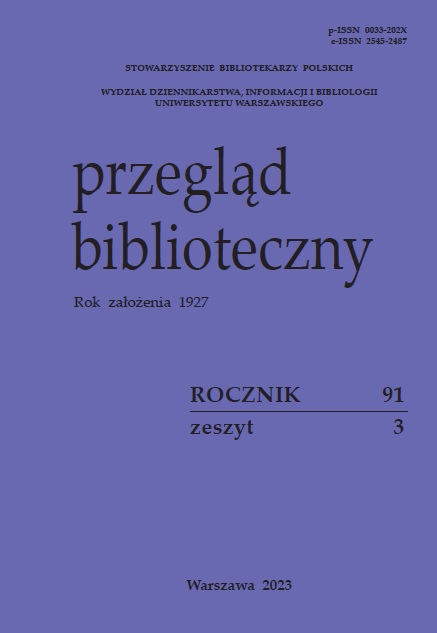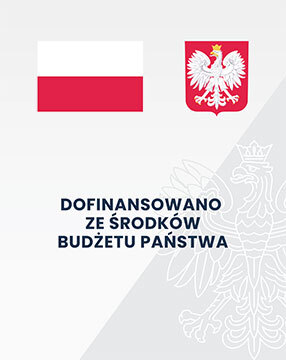Wkład naukowców w ranking IDUB (Inicjatywa Doskonałości – Uczelnia Badawcza). Polscy badacze w Google Scholar
Veslava Osińska
https://orcid.org/0000-0002-1306-7832
Afiliacja: Instytut Badań nad Informacją i Komunikacją Uniwersytet Mikołaja Kopernika, Polska
Bernardeta Iwańska-Cieślik
https://orcid.org/0000-0003-1841-6162
Afiliacja: Institute of Social Communication and Media Kazimierz Wielki University, Bydgoszcz, Poland, Polska
Jakub Wojtasik
https://orcid.org/0000-0001-6157-5658
Afiliacja: Doctoral School of Social Sciences Nicolaus Copernicus University in Toruń, Poland, Polska
Brett Buttliere
https://orcid.org/0000-0001-5025-0460
Afiliacja: Center for European and Regional Studies (EUROREG) University of Warsaw, Polska
Joanna Karłowska-Pik
https://orcid.org/0000-0001-9157-7355
Afiliacja: Faculty of Mathematics and Computer Science Nicholaus Copernicus University in Toruń, Polska
Adam F. Kola
https://orcid.org/0000-0002-0584-6342
Afiliacja: Faculty of Humanities University Centre of Excellence IMSErt – Interacting Minds, Societies, Environments Institute for Advanced Study, Nicolaus Copernicus University in Toruń, Poland University of Amsterdam, Amsterdam, the Netherlands, Polska
Abstrakt
Thesis/Objective – Google Scholar is a tool that is widely used not only to search the scientific literature, but also to obtain information on researchers’ scientometric measures. In this article, we will verify whether, based on GS data, users with the highest measures will be identified as associated with the best universities in Poland, called IDUBs. Methodology – Stepwise logistic regression models with cross-validation were used to find variables significantly influencing the correct automatic classification. Findings and conclusions – The best models in terms of predictive quality were obtained using the h-index, the type of university, the annual number of publications and the year of the first publication as predictors. Student’s t-tests showed statistically significant differences in the mean values of the h-index, the i10 index and the number of publications (p<0.001, p<0.001 and p=0.013, respectively) between researchers from the best 10 universities in Poland (associated as IDUBs) and scientists from other academies. The scholars characterized by high scientometric measures were affiliated to IDUB schools – this relationship is observed within the scope of universities, not technical or medical schools. Due to the free and open nature of the GS, the data obtained from it are heterogeneous and often incomplete, making automatic processing and analysis difficult. These complications are particularly evident when aggregated rather than individual data being analysed. Despite these limitations, the results obtained make it possible to cope with the rapid growth of scientometric data and may lead to the creation of new measures for assessing the scientific output of scientists.
Bibliografia
Akaike, H. (21 December 1981), This Week’s Citation Classic. Current Contents Engineering, Technology, and Applied Sciences, 12(51), 42 [Hirotogu Akaike comments on how he arrived at AIC].
Altman, D. G., & Bland, J. M. (1995). Statistics notes: the normal distribution. Bmj, 310(6975), 298.
Altman, D.G., & Bland, J. M. (1996). Detecting skewness from summary information. Bmj. 313(7066),1200.
Anders, Michael E., and Dennis P. Evans. “Comparison of PubMed and GoogleScholar literature searches.” Respiratory Care 55.5 (2010): 578-583.
Bar-Ilan, J. (2008). Which h-index? – a comparison of WoS, Scopus and Google Scholar. Scientometrics, 74(2), 257–271. https://doi.org/10.1007/s11192-008-0216-y
Boeker, M., Vach, W., & Motschall, E. (2013). Google Scholar as a replacement for systematicliterature searches: good relative recall and precision are not enough. BMC medical research methodology, 13(1), 1-12. https://bmcmedresmethodol.biomedcentral.com/articles/10.1186/1471-2288-13-131
Bogajczyk, M. (2019). Naukowiec w sieci. Warszawa: Biblioteka Uniwersytecka w Warszawie. https://www.buw.uw.edu.pl//wp-content/uploads/2019/09/Naukowiec-w-sieci_ebook-2.pdf
Bornmann, L., & Williams, R.A. (2013). How to calculate the practical significance of citation impact differences? An empirical example from evaluative institutional bibliometrics using adjusted predictions and marginal effects. Journal of Informetrics, 7(2), 562-574. https://doi.org/10.1016/j.joi.2013.02.005
Bornmann, L., Thor, A., Marx, W., & Schier, H. (2016). The application of bibliometrics to research evaluation in the humanities and social sciences: An exploratory study using normalized Google Scholar data for the publications of a research institute. Journal of the Association for Information Science and Technology, 67(11), 2778-2789.
Bramer, W.M., Giustini, D., Kramer, B.M. et al. The comparative recall of Google Scholar versus PubMed in identical searches for biomedical systematic reviews: a review of searches used in systematic reviews. Systematic Reviews, 2, 115 (2013). https://doi.org/10.1186/2046-4053-2-115
Buttliere, B., & Buder, J. (2017). Personalizing papers using Altmetrics: Comparing paper ‘Quality’or ‘Impact’to person ‘Intelligence’or ‘Personality’. Scientometrics, 111(1), 219-239
Chatterjee, A., Ghosh, A., Chakrabarti, B.K. (2016). Universality of Citation Distributions for Academic Institutions and Journals. PLoS one, 11(1): e0146762. https://doi.org/10.1371/journal.pone.0148863
Costas, R., Nane, GF., & Larivière, V. (2015). Is the year of first publication a good proxy of scholars’ academic age? In A.A. Salah, Y. Tonta, A.A. Akdag Salah (Eds.). Proceedings of the 15th international conference on scientometrics and informetrics (pp. 988–998). Istanbul: Bogaziçi University Printhouse.
CWTS Leiden Ranking (2022). Retrieved April 4, 2022 from: https://www.leidenranking.com/information/indicators
D’Alessandro S. et al. (2020). Promote or Perish? A brief note on academic social networking sites and academic reputation. Journal of Marketing Management, 36, 5/6, p. 405-411.
Dorsch, I. (2017). Relative visibility of authors’ publications in different information services. Scientometrics,112, 917-925.
Elliott, A. C., & Woodward, W. A. (2007). Statistical analysis quick reference guidebook: With SPSS examples. London: Sage.
Gusenbauer, M. (2019a). Google Scholar to overshadow them all? Comparing the sizes of 12 academic search engines and bibliographic databases. Scientometrics, 118(1), 177-214 https://doi.org/10.1007/s11192-018-2958-51
Gusenbauer, M. (2019b). Suitable for Systematic Reviews and Meta-Analyses? The Capacity of 23 Academic Search Engines. Academy of Management Annual Meeting Proceedings 2019(1):12759 DOI: 10.5465/AMBPP.2019.12759abstract
Gusenbauer, M., & Haddaway, N. (2020), Which Academic Search Systems are Suitable for Systematic Reviews or Meta‐Analyses? Evaluating Retrieval Qualities of Google Scholar, PubMed and 26 other Resources. Research Synthesis Methods, 11(2), 181-217. https://onlinelibrary.wiley.com/doi/10.1002/jrsm.1378
Harzing, A.W. (February 28, 2017). Google Scholar is a serious alternative to Web of Science. Harzing.com. Research in International Management. Retrieved July 27, 2021, from: https://harzing.com/blog/2017/02/google-scholar-is-a-seriousalternative-to-web-of-science
Harzing, AW., Alakangas, S. Google Scholar, Scopus and the Web of Science: a longitudinal and cross-disciplinary comparison. Scientometrics 106, 787–804 (2016). https://doi.org/10.1007/s11192-015-1798-9
Hosmer, D. W., & Lemeshow, S. (2000). Applied logistic regression (2nd ed.). Chichester, UK: John Wiley & Sons, Inc.
IDUB (2019). IDUB: Polska Inicjatywa Doskonałości - Uczelnie Badawcze. Forum Akademickie, 11; 12. https://prenumeruj.forumakademickie.pl/fa/2019/11/; https://prenumeruj.forumakademickie.pl/fa/2019/12/
Jacsó, P. (2008). Google Scholar revisited. Online Information Review, 32(1), 102-114. https://www.researchgate.net/publication/220207410_Google_Scholar_revisited
Jacsó, P. (2012). Google Scholar Metrics for Publications: The software and content features of a new open-access bibliometric service. Online Information Review, 36(4), 604-619.
Jensenius, F., Htun, M., Samuels, D., Singer, D., Lawrence, A., & Chwe, M. (2018). The Benefits and Pitfalls of Google Scholar. PS: Political Science & Politics, 51(4), 820-824.
Komunikat Ministra Nauki i Szkolnictwa Wyższego z dnia 11 maja 2018 r. o ustanowieniu przedsięwzięcia pod nazwą „Strategia Doskonałości – Uczelnia Badawcza” (2018). Retrieved September 23, 2021, from: https://www.gov.pl/web/edukacja-i-nauka/komunikat-ministra-nauki-i-szkolnictwa-wyzszego-z-dnia-11-maja-2018-r-o-ustanowieniu-przedsiewziecia-pod-nazwa-strategia-doskonalosci--uczelnia-badawcza
Kulczycki, E. (2011). Google Scholar Citations otwarte dla wszystkich! [online] Warsztat badacza, 17.11.2011. Retrieved March 21, 2022 from: https://ekulczycki.pl/warsztat_badacza/google-scholar-citations-otwarte-dla-wszystkich/
Kulczycki, E. (2013). Jak dodać prace do Google Scholar i zwiększyć liczbę cytowań oraz indeks Hirscha. Poradnik dla początkujących, Poznań: Stowarzyszenie EBIB. https://repozytorium.amu.edu.pl/bitstream/10593/4369/8/Jak_dodac_prace_do_Google_Scholar-v.1.1.pdf
Kwiek, M., Roszka, W. (2021). Gender-based homophily in research: A large-scale study of man-woman collaboration. Journal of Informetrics, 15(3), https://doi.org/10.1016/j.joi.2021.101171
Lewandowski, T. (2014). Google Scholar a repozytoria i biblioteki cyfrowe w Polsce. Otwarta Nauka, August 28, 2014. Retrieved March 23, 2022 from: https://otwartanauka.pl/analysis/case-studies/google-scholar-a-repozytoria-i-biblioteki-cyfrowe-w-polsce?showall=1&limitstart=
Lewandowski, T. (2017). Jak zwiększyć widoczność publikacji naukowych w Internecie z pomocą Google Scholar. Platforma Otwartej Nauki, November 21, 2017. Retrieved March 23, 2022 from: https://bg.uwb.edu.pl/DebataOA2017/materialy/lewandowski_oa_week_2017.pdf
López-Cózar, E.D., Robinson-García, N., & Torres-Salinas, D. (2012). Manipulating Google Scholar Citations and Google Scholar Metrics: simple, easy and tempting. EC3 Working Papers 6: 29 May, 2012. Retrieved June 6, 2021, from: https://arxiv.org/ftp/arxiv/papers/1212/1212.0638.pdf
Martín‑Martín, A., Thelwall, M., Orduna‑Malea, E., López‑Cózar, E.D. (2021). Google Scholar, Microsoft Academic, Scopus, Dimensions, Web of Science, and OpenCitations’COCI: a multidisciplinary comparison of coverage via citations. Scientometrics, 126 (1), 871-906, https://doi.org/10.1007/s11192-020-03690-4 1 3
Methodology. CWTS Leiden Ranking (2014), Universiteit Leiden Centre for Science and Technology Studies. Retrieved April 4, 2022 from: https://www.leidenranking.com/Content/CWTS%20Leiden%20Ranking%202014.pdf
Milojević, S. (2012). How Are Academic Age, Productivity and Collaboration Related to Citing Behavior of Researchers? PLoS one, 7(11): e49176. https://doi.org/10.1371/journal.pone.0049176
Mingers, J., O’Hanley, J.R. & Okunola, M. (2017). Using Google Scholar institutional level data to evaluate the quality of university research. Scientometrics, 113(1), 1627–1643. https://doi.org/10.1007/s11192-017-2532-6
Moed, H.F., Bar-Ilan, J., & Halevi, G. (2016). A new methodology for comparing Google Scholar and Scopus. Journal of Informetrics, 10 (2), 533-551.
Nauka Polska (2021). Retrieved July 19, 2021, from: https://nauka-polska.pl/#/home/search?_k=ovh688
Norris, M., Oppernheim, Ch. (2007). Comparing alternatives to the Web of Science for coverage of the social sciences’ literature. Journal of Infometrics, 1(2), 161-169.
Orcan, F. (2020). Parametric or non-parametric: Skewness to test normality for mean comparison. International Journal of Assessment Tools in Education, 7(2), 255-265.
Pierwszy konkurs w programie „Inicjatywa doskonałości – uczelnia badawcza” (March 27, 2019). Konstytucja dla Nauki. Retrieved September 23, 2021 from:https://konstytucjadlanauki.gov.pl/pierwszy-konkurs-w-programie-inicjatywa-doskonalosci-uczelnia-badawcza
POL-on. Radon – raporty, analizy, dane (2021). Retrieved July 19, 2021, from: https://radon.nauka.gov.pl/raporty/Kadra2019
Prawo o szkolnictwie wyższym i nauce (2021). Obwieszczenie Marszałka Sejmu Rzeczypospolitej Polskiej z dnia 1 marca 2021 r. w sprawie ogłoszenia jednolitego tekstu ustawy – Prawo o szkolnictwie wyższym i nauce. Dziennik Ustaw, poz. 478, art. 388.
Pulikowski, A. (2015). Widoczność polskich publikacji naukowych w Internecie. Zagadnienia Informacji Naukowej, 53, 1 (105), 59-70.
Radicchi, F., Fortunato, S., Castellano, C. (2008). Universality of citation distributions: Toward an objective measure of scientific impact. PNAS, 105(45), 17268-17272. Retrieved April 3, 2022 from: www.pnas.orgcgidoi10.1073pnas.0806977105
Sauvayre, R. (2022). Types of Errors Hiding on Google Scholar Data. Journal of Medical Internet Research, 24 (5), pp. 1-13.
Shultz, M. (2007). Comparing test searches in PubMed and Google Scholar. Journal of the Medical Library Association, 95(4), 442-445. https://www.ncbi.nlm.nih.gov/pmc/articles/PMC2000776/
Simoes, N., & Crespo, N. (2020). A flexible approach for measuring author-level publishing performance. Scientometrics, 122(1), 331-355.
Świgoń, M., Głowacka, E., Kisilowska-Szurmińska, M.(2022). Academia.edu, ResearchGate, Google Scholar, Scopus i Publons (Web of Science) – szczegółowa analiza obecności reprezentantów nauk o komunikacji społecznej i mediach. Media – Kultura – Komunikacja Społeczna, 18, p. 83-101.
Teixeira da Silva, J. A. (2018). The Google Scholar h-index: useful but burdensome metric. Scientometrics, 117(1), 631-635. https://link.springer.com/article/10.1007%2Fs11192-018-2859-7
Teixeira da Silva, J. A. (2021). The i100‑index, i1000‑index and i10,000‑index: expansion and fortification of the Google Scholar h‑index for finer‑scale citation descriptions and researcher classification. Scientometrics, 126 (4), 3667-3672. https://link.springer.com/article/10.1007%2Fs11192-020-03831-9
Thelwall, M., Haustein, S., Larivière, V., & Sugimoto, C. R. (2013). Do altmetrics work? Twitter and ten other social web services. PloS one, 8(5), e64841.
Thelwall, M., & Kousha, K. (2017). ResearchGate versus Google Scholar: Which finds more early citations?. Scientometrics, 112(2), 1125-1131. https://link.springer.com/article/10.1007%2Fs11192-017-2400-4
Thelwall, M., &Wilson, P. (2014). Distributions for cited articles from individual subjects and years. Journal of Informetrics, 8(4), 824-839. https://doi.org/10.1016/j.joi.2014.08.001
Tober, M. (2011). PubMed, ScienceDirect, Scopus or Google Scholar — Which is the best search engine for effective literature research in laser medicine?. Medical Laser Application, 26, 139-144.
Waltman, L., Calero-Medina, C., Kosten, J., Noyons, E.C.M., Tijssen, R.J.W., Van Eck, N.J., Van Leeuwen, T.N., Van Raan, A.F.J., Visser, M.S., & Wouters, P. (2012). The Leiden Ranking 2011/2012: Data collection, indicators, and interpretation. Journal of the American Society for Information Science and Technology, 63(12), 2419-2432.
Waltman, L., &Van Eck, N.J. (2013). Source normalized indicators of citation impact: An overview of different approaches and an empirical comparison. Scientometrics, 96(3), 699-716.
Wang, D., & Barabási, A. (2021). Science of Science. Boston. Publisher: Cambridge University Press.
Williams, R. (2012). Using the margins command to estimate and interpret adjusted predictions and marginal effects. The Stata Journal, 12(2), 308-331.
Yang, K., & Meho, L.I. (2006), Citation Analysis: A Comparison of Google Scholar, Scopus, and Web of Science. Proceedings of American Society for Information Science and Technology, 43: 1-15. https://doi.org/10.1002/meet.14504301185
Yu, G., Keirstead, J., Jefferis, G., Getzinger, G., Cimentada, J., Czapanskiy, M., & Makowski, D. (2021). Analyse Citation Data from Google Scholar [Package]. Retrieved April 4, 2022 from: https://cran.csail.mit.edu/web/packages/scholar/scholar.pdf
Zientek, L. R., Werner, J. M., Campuzano, M. V., & Nimon, K. (2018). The use of Google Scholar for research and research dissemination. New Horizons in Adult Education and Human Resource Development, 30(1), 39-46.
https://orcid.org/0000-0002-1306-7832
Afiliacja: Instytut Badań nad Informacją i Komunikacją Uniwersytet Mikołaja Kopernika, Polska
Biogram:
Veslava Osińska – is associate professor at the Institute of Information and Communication Research at the Nicolaus Copernicus University and a principal investigator of the Polish team in the international Chistera project – Bitscope (bitscope.umk.pl). Her interests are multi-scale data visualization methods, in particular science visualization. She is a lector of subjects related to data processing, analyses and visualization. Veslava Osińska is a member of several societies, both national and international: Polish Information Technology Society, International Society of Knowledge Organization and the Association of Polish Scientists in Lithuania.
https://orcid.org/0000-0003-1841-6162
Afiliacja: Institute of Social Communication and Media Kazimierz Wielki University, Bydgoszcz, Poland, Polska
Biogram:
Bernardeta Iwańska-Cieślik – Ph.D., assistant professor at the Department of Journalism and Media Research at the Institute of Social Communication and Media at the Kazimierz Wielki University in Bydgoszcz. Her research interests revolve around the history of books and the press in Włocławek, and she also deals with bibliometric issues based on the publishing activity of academic librarians in the field of old books and the press. Author of the book Biblioteka kapituły katedralnej we Włocławku (2013), editor of collective works and several dozen scientific articles, including: Informacja o nowych publikacjach polskich bibliologów i informatologów w przestrzeni sieciowej („Toruńskie Studia Bibliologiczne” 2016).
https://orcid.org/0000-0001-6157-5658
Afiliacja: Doctoral School of Social Sciences Nicolaus Copernicus University in Toruń, Poland, Polska
Biogram:
Jakub Wojtasik - senior data analyst at the Center for Statistical Analysis at the Nicolaus Copernicus University in Toruń. He is a PhD student at the Doctoral School of Social Sciences in Nicolaus Copernicus University in Toruń. Fellow of the Polish National Science Center and the Polish National Agency for Academic Exchange His research interests include issues of mathematical modeling, applications of data mining methods and machine learning in economic models and forecasting, as well as optimization theory.
https://orcid.org/0000-0001-5025-0460
Afiliacja: Center for European and Regional Studies (EUROREG) University of Warsaw, Polska
Biogram:
Brett Buttliere – Ph.D., works at the Center for European and Regional Studies (EUROREG) at the University of Warsaw. Author of several papers across areas such as psychology, bibliometrics, psychology of science, and communication, his interests mainly came from an understanding that science is done by humans, and that any problems and potential solutions must consider this humanness. He has worked at universities in the United States, the Netherlands, Germany, and Poland, and contributed to conferences across the world. He has variously surveyed scientists about open science (2014), analyzed conflict in scholarly tweets and article keywords (2017), synthesized ‘alternative’ metrics of impact (2017), studied science on Wikipedia (2021), outlined mechanisms enabling shareable analysis scripts (2021), and developed the meta.data() R package (2023). He is actively working on encouraging scientists to engage with and contribute to Wikimedia, encouraging academic societies to host conferences in developing nations, developing more sustainable and creative research environments, and developing a more general and applicable model of minds.
https://orcid.org/0000-0001-9157-7355
Afiliacja: Faculty of Mathematics and Computer Science Nicholaus Copernicus University in Toruń, Polska
Biogram:
Joanna Karłowska-Pik, assistant professor at the Faculty of Mathematics and Computer Science, Nicolaus Copernicus University in Toruń, and Director for the Centre for Statistical Analysis, NCU. Holds a PhD in mathematics. Trainer of IBM SPSS Statistics Software. Research interests and expertise include stochastic processes, statistics and data science – mainly applications of machine learning in medicine and natural sciences.
https://orcid.org/0000-0002-0584-6342
Afiliacja: Faculty of Humanities University Centre of Excellence IMSErt – Interacting Minds, Societies, Environments Institute for Advanced Study, Nicolaus Copernicus University in Toruń, Poland University of Amsterdam, Amsterdam, the Netherlands, Polska
Biogram:
Adam F. Kola is a director of the Center of Excellence IMSErt: Interacting Minds, Societies, Environments and associate professor at Nicolaus Copernicus University, Toruń, Poland. In 2021-2022 he was a visiting researcher at the Institute for Advanced Study, University of Amsterdam; in 2016-2019 he was a visiting scholar at the University of Chicago. His research has been focused on Eastern and Central European intellectual and literary history, memory studies of the 19th and 20th centuries, and global knowledge transfer. His most recent books are: ‘Studying the Memory of Communism. Genealogies, Social Practices and Communication’ (eds. with R. Halili, G. Franzinetti, 2021, in English) and ‘Socialist Postcolonialism. Memory Reconsolidation’ (2018, in Polish). He is the author of about 100 papers in Polish, Czech, Russian, German, and English, and he translates Czech and English into Polish.
Autor składa oświadczenie o oryginalności przesłanego tekstu, a w umowie wydawniczej przenosi na rzecz Wydawcy nieodpłatnie majątkowe prawa autorskie w zakresie jednorazowego opublikowania dzieła.
CC BY-NC-ND 4.0 Uznanie autorstwa - Użycie niekomercyjne - Bez utworów zależnych 4.0 Międzynarodowe




